The global food system is currently facing unprecedented challenges, from population growth and climate change to supply chain disruptions. The use of AI in the food industry is now improving the efficiency, safety, and quality of the food production process to tackle this worldwide crisis.
In today’s food sector, AI is more important than ever. It helps us tackle complex challenges such as food waste, supply chain inefficiencies, and ever-changing consumer demands. With new-age, AI-powered business ideas, we can now create more efficient and sustainable food systems that benefit everyone.
From tackling the global food crisis through precision agriculture to enabling personalized nutrition and new product development, AI has the potential to create value for food businesses. And for those looking to launch an AI startup, the food industry is currently a promising and exciting area to explore.
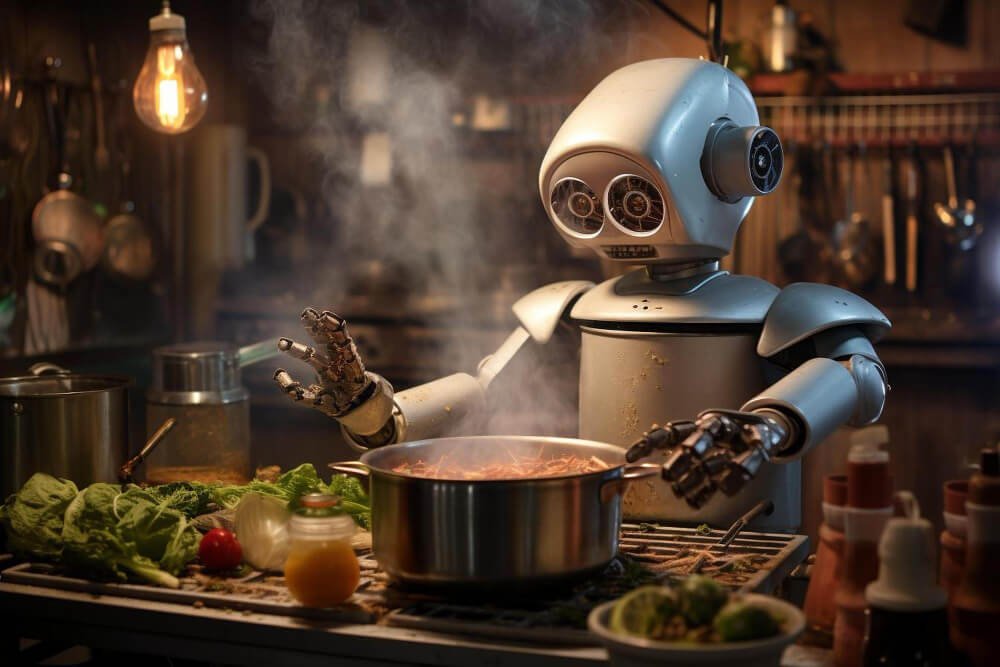
What Is AI in the Food Industry?
Artificial intelligence (AI) in the food industry is the application of advanced technologies like machine learning and computer vision to solve challenges and create new opportunities across the entire food supply chain.
As per a report by the World Health Organization, the global food industry generates $9.4 trillion in revenue each year, which is more than 10% of the global GDP. So, even small improvements driven by artificial intelligence can have a massive impact.
AI can efficiently optimize various processes and operations across the food industry, from production and processing to distribution and retail. It can also reduce waste, enhance food safety, and deliver personalized gastronomic experiences.
Moreover, AI in fast-food chains helps optimize order management, streamline kitchen operations, and enhance customer service through chatbots and recommendation systems.
Just like AI in the fashion world predicts trends, AI in the food industry can even forecast consumer preferences and optimize the entire operation.
The Future of AI in the Food Industry
The future of AI in the food industry is incredibly promising, with the potential to transform every aspect of the food value chain, from farm to fork.
The role of artificial intelligence in the global food sector will soon expand to include more advanced automation, predictive maintenance, and personalized nutrition. We will also see AI rapidly improving food safety standards.
According to Mordor Intelligence, the market size of AI in the food industry will be $48.99 Billion by 2029, with an estimated CAGR of 38.30%.
This growth will likely lead to even more innovative applications, such as hyper-personalized nutrition, robotic chefs, and AI-powered supply chains that can predict and prevent disruptions.
We’ll also see the rise of AI-powered digital marketing campaigns that tailor food recommendations to individual preferences, creating a truly personalized culinary experience.
The future of food is not just about what we eat but how AI is transforming the way we produce, distribute, and enjoy it.
AI in the Food Industry: 14 Steps to Take, Tools, and Implementation Strategies
It is now possible to implement AI in the food industry, as several tools, SaaS, and AI-powered machinery are available specifically for the global food sector. However, we have selected 14 such use cases where implementing artificial intelligence can bring maximum value and ROI.
Trend Forecasting

Trend Forecasting is a powerful technique that allows food businesses to predict upcoming market trends and consumer preferences. By using predictive analytics, AI algorithms can analyze historical data, consumer behavior patterns, and market signals to forecast future trends with remarkable accuracy.
According to the UNEP Food Waste Index Report, 30% of total food and drink produce is discarded annually in the US alone, which is $48.3 billion in monetary value. AI-driven trend forecasting can help minimize waste by aligning production with anticipated demand.
AI can help food businesses anticipate what consumers will want to eat and drink in the months and years ahead. By proactively identifying emerging trends, you can also optimize your product offerings and enhance customer satisfaction.
Interestingly, artificial intelligence can also forecast the most popular flavors, ingredients, and even food presentation styles.
For accurate trend forecasting in the food industry, you can utilize tools like TrendSpottr, Black Swan Data, or Trendscope. Tools such as Hivery and DataRobot can also provide actionable insights to refine your strategy.
You can even go a step further by using music production and video production with AI to create compelling ads and social media content based on predicted trends.
Smart and Precision Farming
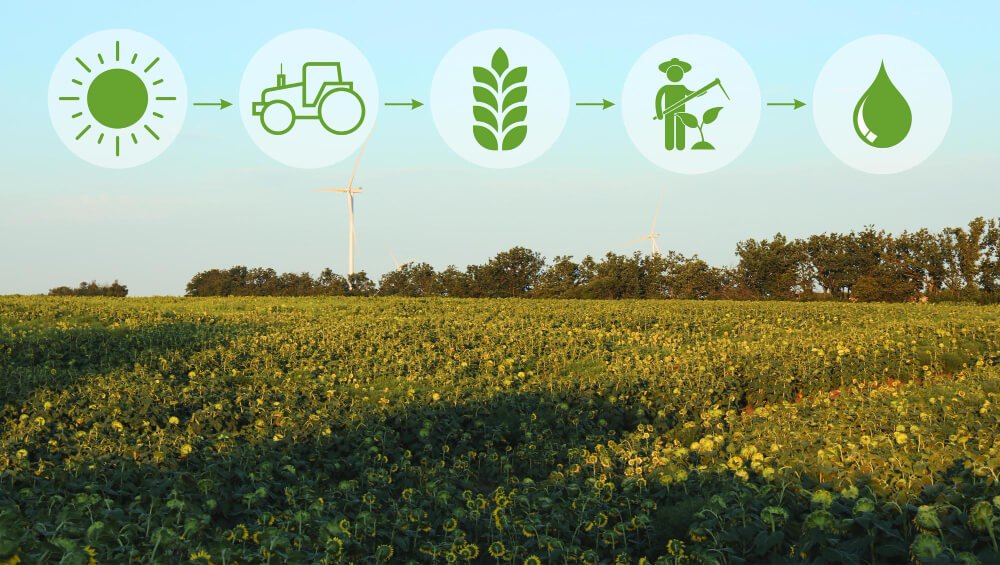
Precision farming is a revolutionary approach that uses cutting-edge technologies to optimize crop yields, minimize resource consumption, and enhance sustainability. By leveraging artificial intelligence in the food industry, farmers can now implement targeted interventions to improve productivity and profitability.
The world’s population is growing, and we must find more efficient and sustainable ways to produce food. With AI technologies, we can grow more food on less land while reducing waste and protecting the environment.
By utilizing AI in precision agriculture, you can easily monitor crop health, optimize irrigation and fertilization, and predict potential issues before they impact your harvest. The main benefits also include improved crop quality and lower operational costs.
You can leverage AI solutions like Syngenta, Prospera, and Taranis that use satellite imagery, drone data, and IoT sensors to collect real-time information about your crops. Advanced AI algorithms then analyze this data to provide actionable insights and recommendations.
Tools like FarmWise and Blue River Technology also offer AI-driven precision weed control and crop management solutions, enabling you to minimize chemical usage and promote sustainable farming practices.
Automated Product Sorting

Automated product sorting is the process of using AI-powered machines to categorize and separate food products based on specific criteria, such as size, color, quality, and weight.
It mainly uses computer vision and robotics to streamline the sorting and grading processes in the food industry. These systems can even detect subtle defects or contaminants that the human eye might miss.
According to a research paper by McKinsey, 70% of global companies will adopt at least one type of AI technology by 2030, highlighting the growing importance of AI in the food industry.
AI-powered automated sorting also enhances operational efficiency, reduces labor costs, decreases processing times, and improves accuracy.
You can explore AI-powered sorting machines like Bühler Sortex, TOMRA Food, or Key Technology, which use advanced computer vision algorithms to identify and separate products based on different quality parameters.
Additionally, solutions like MaxSorter and Newtec offer customizable sorting machines that can be tailored to your specific product requirements.
Integrating these AI-driven technologies into your food sorting processes can increase throughput, reduce waste, and improve product consistency.
Flavor and Ingredient Optimization
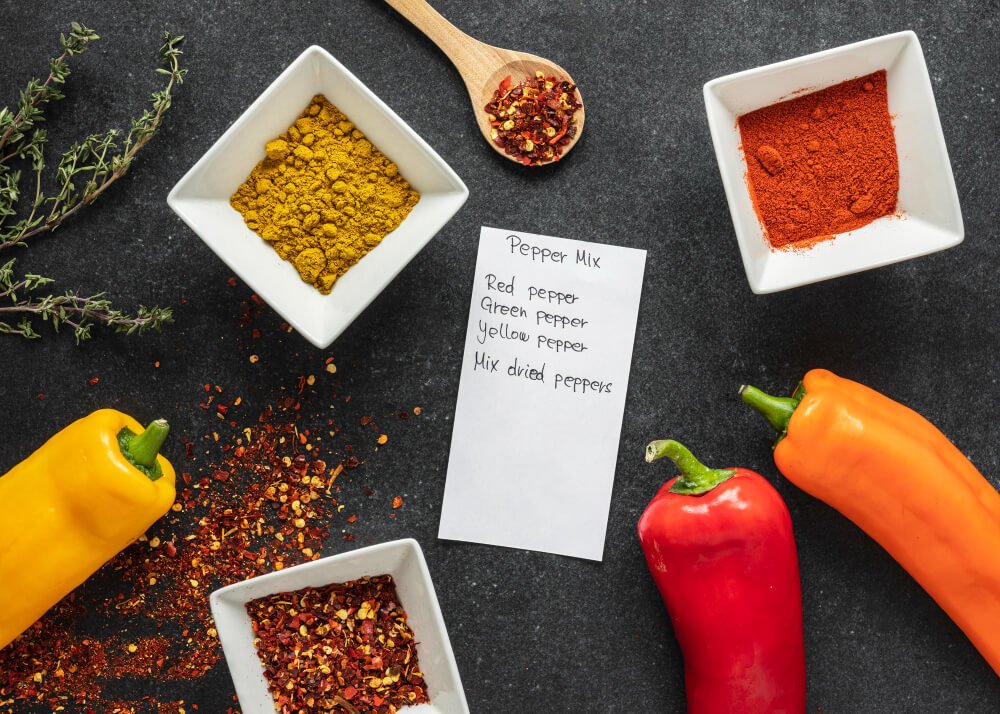
Flavor and ingredient optimization is a cutting-edge application of AI in the food industry that enables businesses to create innovative and delightful food products by identifying the perfect combination of ingredients and flavors. Accurate ingredients can also improve taste profiles and improve nutritional value.
AI can help food scientists and chefs develop new recipes, optimize existing formulations, and predict consumer preferences with unparalleled precision.
By harnessing the power of AI, you can reduce product development time, minimize costly trial-and-error processes, and create products that resonate with your target audience, ultimately driving customer loyalty and boosting your bottom line.
You can use AI in social media to gather insights on consumer preferences and trending flavors. Tools like Gastrograph AI, Spice AI, and Spoonshot can then analyze those insights to suggest optimal ingredient combinations.
Companies like Foodpairing and FlavorWiki provide AI-driven solutions to refine recipes.
These AI-powered platforms can analyze existing recipes, ingredient properties, and consumer feedback to suggest new and innovative flavor combinations. Machine learning algorithms can then simulate the taste and texture of these combinations, allowing you to refine your recipes before even stepping into the kitchen.
Food Processing Monitoring
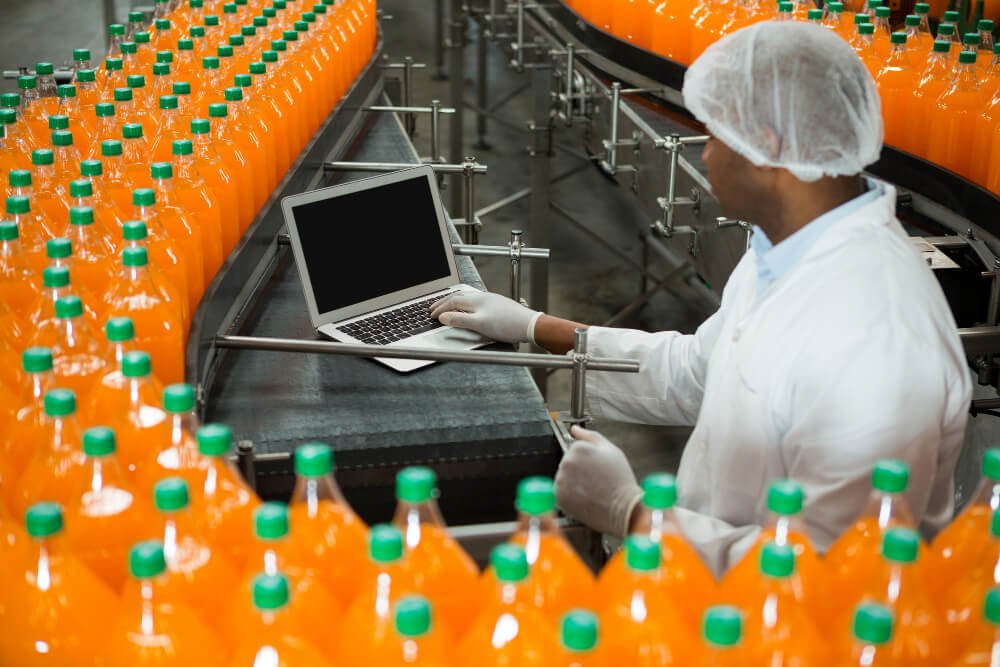
Food processing monitoring is the use of the latest technology to monitor and control the production and handling of food products to ensure food safety and prevent food contamination.
By leveraging AI-powered sensors, computer vision, and data analytics, food businesses can monitor every step of the food processing journey in real time, from raw material intake to final product packaging.
According to the United States Department of Agriculture, over 1.5 million workers are directly associated with food processing plants in the US alone. This highlights the importance of efficient monitoring systems to support such a large workforce and efficient food supply.
To implement AI in food processing monitoring, you can use platforms like FoodDocs, NeoGen, and SafetyChain, which use IoT sensors and machine learning algorithms to collect and analyze data from various touchpoints in the food processing pipeline.
Additionally, solutions like Intello Labs and SafeTraces offer AI-powered visual inspection and quality control systems that can detect anomalies, foreign objects, and packaging defects in real-time, enabling you to take immediate corrective actions and prevent potential recalls or safety incidents.
Sensory Analysis

Sensory Analysis is a powerful technique that systematically evaluates food products using human senses, such as taste, smell, sight, and touch, to assess their quality, acceptability, and consumer appeal.
By combining traditional sensory analysis methods with AI-driven technologies, food businesses can gain deeper insights into consumer preferences, optimize product formulations, and ensure consistent sensory experiences across their product lines.
Traditional sensory analysis relies on human panelists, which can be subjective and time-consuming. AI, on the other hand, can provide objective, consistent, and scalable data.
According to NCBI, AI algorithms along with E-nose (electronic nose), E-tongue (electronic tongue), computer vision, and NIRS (near-infrared spectroscopy) will play a significant role in the food industry.
Proper sensory analysis, including food taste analysis and other sensory evaluations, can be performed using platforms like Aigora. This AI-based sensory analysis solution combines machine learning, computer vision, and natural language processing to analyze sensory data and generate actionable insights.
Other tools, such as Alpha MOS and zNose, provide electronic nose and tongue systems that can objectively measure and characterize flavors, aromas, and textures.
You can also use Sightcorp and Noldus FaceReader, which use facial expression analysis to assess consumers’ emotional responses to food products.
Automated Quality Control

Automated quality control is like having a tireless inspector on your production line, ensuring every food product meets the highest standards. It ensures consistency and safety in every product batch.
Today, consumers expect safe and delicious food products. With AI-powered quality control, you can identify defects, contaminants, and inconsistencies in real time, preventing costly recalls and protecting consumer trust.
In this process, high-resolution cameras and sensors first capture detailed images of food products. Then, AI algorithms analyze these images, detecting any deviations from established quality parameters.
According to Precedence Research, AI in the US food and beverages market will reach a $60.52 billion market size by 2033, with a projected CAGR of 39.27%. This highlights the growing importance of AI-powered quality control systems in the food industry.
AI platforms like Neurala offer an intelligent visual inspection system to detect defects, anomalies, and quality issues. Clarifai and IBM Food Trust provide computer vision algorithms to analyze product images and identify potential quality concerns.
You can use Sight Machine and Fusionware, which integrate AI-driven quality control with traceability. You can also integrate AI into customer service to gather feedback and address concerns quickly.
AI-Powered Food Safety Assessment
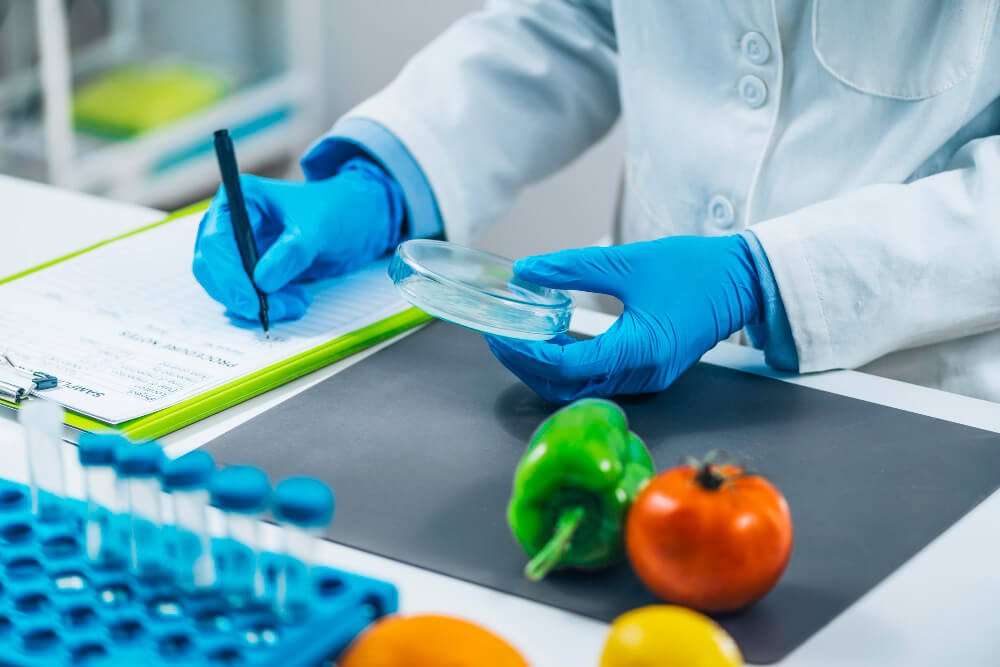
AI-powered food safety assessment is a cutting-edge approach that utilizes advanced AI algorithms and sensors to monitor, detect, and prevent potential food safety hazards throughout the supply chain.
With the increasing complexity of global food supply chains and the growing concern over foodborne illnesses, implementing AI-driven food safety solutions is now crucial for protecting consumer health and maintaining brand reputation.
By using technologies like machine learning, predictive analytics, and IoT, food businesses can proactively identify and mitigate risks, ensuring the highest standards of food safety and quality. These technologies also help detect early food contamination and reduce the risk of cross-contamination.
Companies like FoodDocs provide comprehensive traceability solutions to monitor the entire supply chain. You can also use PathogenDx, which offers advanced pathogen detection.
Besides, startups like Yarok Microbio and iCertainity offer AI-based microbiological testing and environmental monitoring solutions.
By integrating these AI solutions, we can easily enhance our safety protocols, ensuring our products are consistently safe. For those looking to explore AI side hustles, these technologies present opportunities to innovate and improve food safety practices.
Shelf-Life Prediction
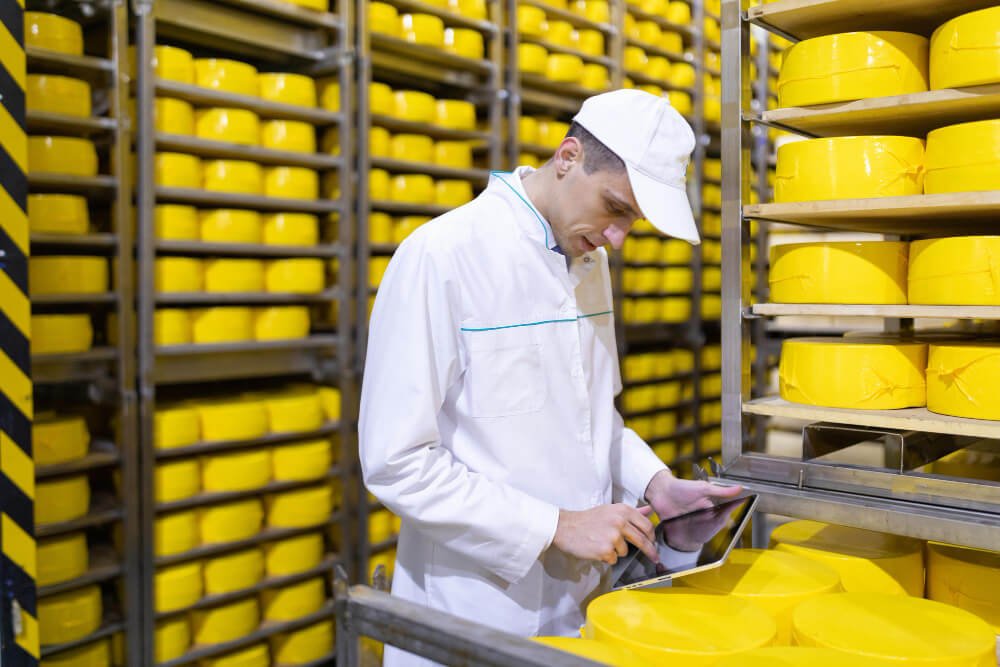
Shelf-life prediction uses AI to estimate how long food products will remain fresh and safe to eat. Artificial intelligence in the food industry can now help food manufacturers and retailers optimize their inventory management, reduce waste, and ensure product freshness and quality.
It also extends storage life, reduces spoilage, and improves overall manufacturing efficiency. We can effectively minimize waste and ensure product quality by accurately predicting food storage life.
Companies like PredictHQ and Relex Solutions offer software that uses data analytics to optimize inventory based on shelf-life predictions. You can also use Wasteless, an AI-driven platform that helps with dynamic pricing to sell products before they expire.
Other tools like Evigence offer AI-powered shelf-life prediction solutions that integrate with your existing supply chain and inventory management systems. Another tool, ripeTrack, provides real-time freshness tracking.
Integrating these tools into AI-powered retail businesses ensures better stock management and reduces losses. By adopting these new-age technologies, we can enhance our operations, provide fresher products to customers, and support sustainability efforts.
This approach not only benefits us but also builds trust with our consumers by consistently delivering high-quality products.
Smart Labeling
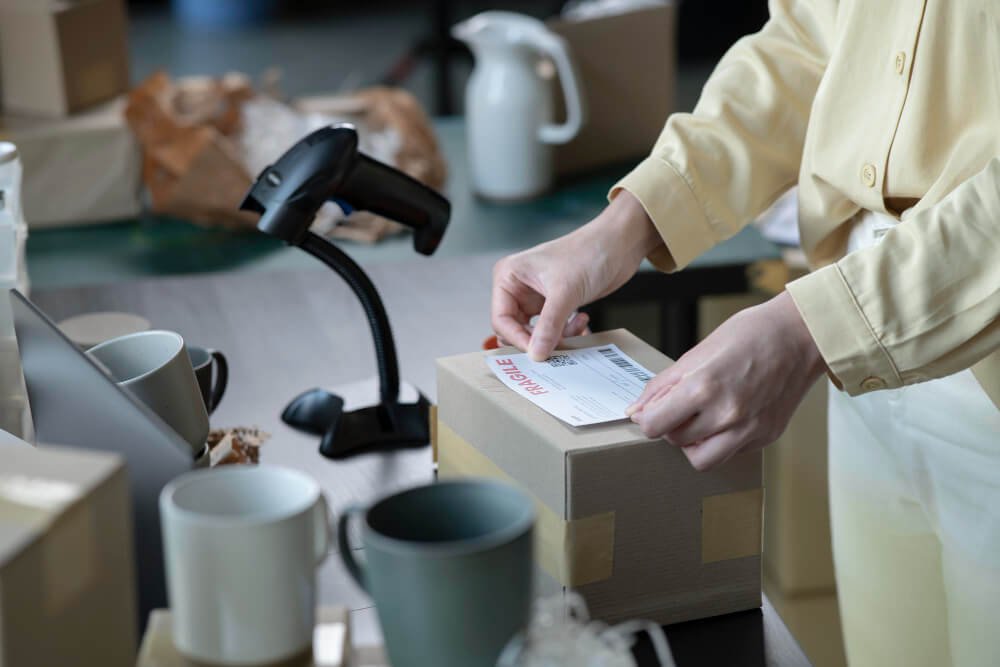
Smart labeling uses advanced technologies to provide detailed information about food products. It ensures consumers receive accurate product details.
In the food industry, transparency and traceability are becoming increasingly important. Smart labeling, powered by AI in the food industry, can help you build trust with consumers by providing detailed information about ingredients, origin, and sustainability practices.
Plus, with smart labeling machines and automation, you can streamline your labeling process and reduce errors. This technology can even be a valuable tool for those looking to start an AI-powered e-commerce business.
To utilize artificial intelligence for smart labeling, we can employ tools like Avery Dennison, which offers advanced labeling solutions. Companies like Label Insight and Zappar provide interactive labels that engage consumers with additional product information.
You can also use platforms like Evrythng to enable dynamic updates on labels, ensuring real-time accuracy. Other tools like Esko and LoftWare NiceLabel provide AI-powered label design and management solutions to help you create accurate and visually appealing labels.
Using these AI-powered tools and platforms not only benefits your overall operations but also enhances our brand’s reputation by consistently providing reliable product information.
Automated Food Packaging

Automated food packaging combines robotics, machine learning, and computer vision to streamline the packaging and labeling processes in the food industry.
By integrating advanced food packaging equipment, businesses can achieve higher efficiency, accuracy, and consistency in their packaging operations while reducing labor costs and minimizing human error.
Labor shortages and rising costs are challenges faced by many food businesses. According to a Statista report, there will be 5.4 billion robotics units in the global food market by the end of 2030.
Automated packaging with AI-powered robotics can boost efficiency, reduce labor costs, and ensure consistent quality in food packaging. It begins with choosing the right equipment, like robotic arms, conveyor belts, and smart packaging systems.
To get started, you can use tools like ABB Robotics and KUKA, which offer advanced robotic solutions for packaging. Companies like Sealed Air and Multivac also provide smart packaging technologies that enhance product preservation and shelf life.
You can even use Packsize’s on-demand packaging solutions to optimize the process further. Other tools like OMRON and Mettler Toledo provide AI-driven packaging inspection and quality control solutions that can integrate seamlessly with your existing production lines.
Supply Chain Monitoring

Supply chain monitoring enables food businesses to track, analyze, and optimize the flow of products, information, and resources across the entire supply chain.
In the global food sector, we’re now dealing with perishable goods, and delays or disruptions can lead to waste and lost revenue.
By using AI in the food industry to monitor your supply chain, you can identify bottlenecks, predict potential risks, and optimize logistics for maximum efficiency. This is where AI in logistics comes in, offering real-time visibility and data-driven insights.
To implement smart supply chain monitoring, you can explore AI platforms like FourKites, which offers an end-to-end supply chain visibility solution that integrates real-time data from various sources to provide actionable insights and predictive analytics.
Other tools like Savi and Shippeo provide AI-powered tracking and monitoring solutions that can help you optimize your transportation and logistics operations.
Noodle.ai and ThroughPut also offer AI-driven demand forecasting and inventory optimization capabilities, enabling you to better align your supply chain with customer demand and reduce excess inventory.
Predictive Maintenance
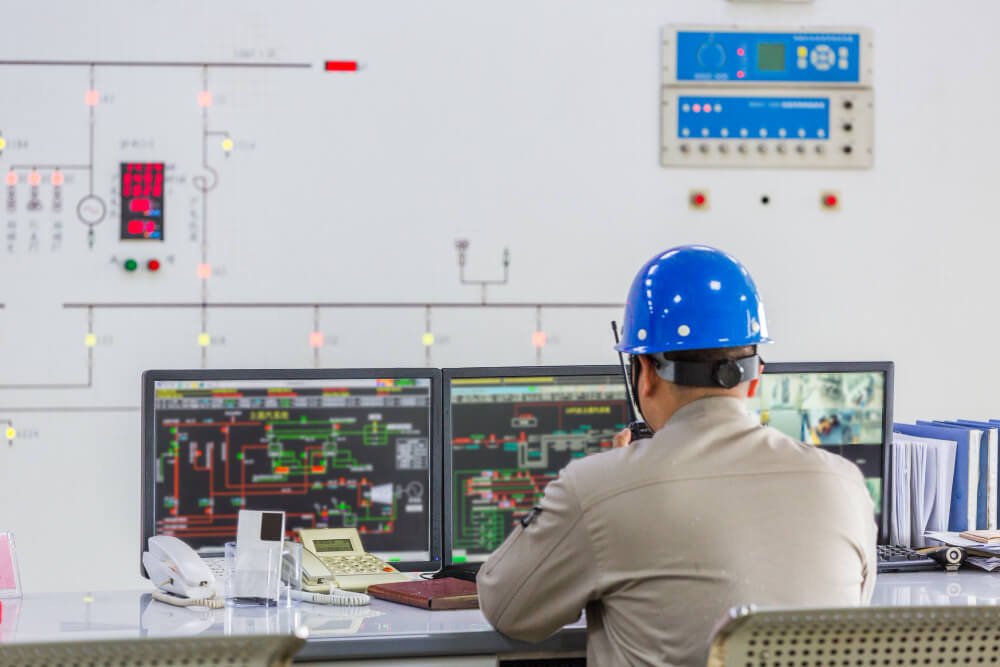
Predictive maintenance enables food businesses to proactively monitor and maintain their equipment, machinery, and infrastructure to prevent unexpected breakdowns and optimize performance.
By leveraging machine learning algorithms, IoT sensors, and data analytics, modern-day predictive maintenance systems can detect early signs of wear and tear, predict potential failures, and recommend timely interventions to avoid costly downtime and repairs.
With proper AI-driven maintenance solutions, you can extend the lifespan of your assets, reduce maintenance costs, and minimize production disruptions. Moreover, predictive maintenance can help you optimize your maintenance schedules, reduce energy consumption, and improve overall operational efficiency.
To use artificial intelligence for predictive maintenance, you can leverage tools like IBM Maximo and Siemens MindSphere, which offer advanced analytics for equipment monitoring. Companies like Uptake and SparkCognition also provide AI-driven solutions that predict maintenance needs and prevent breakdowns.
Using solutions from Fiix and Augury helps monitor machinery health and schedule timely maintenance. All these tools analyze sensor data and predict when maintenance is needed, ensuring our equipment runs smoothly.
This proactive, AI-driven approach not only keeps our production line running efficiently but also saves costs and improves product quality.
Energy Optimization

Energy optimization is a powerful application of AI in the food industry that enables businesses to monitor, analyze, and optimize their energy consumption across various processes, from production and packaging to refrigeration and distribution.
AI-driven energy optimization solutions can easily identify energy inefficiencies, predict demand patterns, and recommend targeted interventions to reduce energy waste and costs.
Proper energy optimization also addresses environmental issues by reducing carbon footprints and lowering operational costs. Plus, AI-powered energy consumption optimization is an in-demand AI skill that can give you a competitive edge.
Smart sensors and IoT devices can monitor energy usage in real-time, while AI algorithms analyze this data to identify inefficiencies and opportunities for optimization. Machine learning models can then recommend adjustments to lighting, heating, cooling, and other systems.
To utilize AI for energy optimization, you can use tools like Schneider Electric EcoStruxure and Siemens EnergyIP, which monitor and manage energy use in real time.
GridPoint and Enertiv also offer AI-driven solutions to optimize energy consumption in facilities. Using solutions from Verdigris helps identify inefficiencies and suggest improvements.
Top 5 Advantages of Using AI in the Food Industry
The use of artificial intelligence (AI) in the food industry is a win-win situation for everyone involved, from farmers and producers to retailers and consumers.
According to the Future of Jobs Report, AI is likely to replace 85 million jobs by 2025. On the contrary, the advancement of AI will create 97 million new jobs, which is 12 million more jobs than it replaces.
These new career opportunities will include jobs in areas such as AI in food processing and other industries. Now, let’s understand the top five benefits of AI in the food industry:
- Enhanced Efficiency and Productivity: AI-powered automation can streamline repetitive tasks like sorting, packaging, and quality control, freeing up your workforce for more complex and creative endeavors.
- Improved Food Safety and Quality: AI algorithms can detect patterns and anomalies that could indicate potential food safety risks, minimizing the risk of contamination and recalls.
- Sustainability and Waste Reduction: AI can help optimize resource utilization, reduce energy consumption, and minimize food waste throughout the supply chain.
- Personalized Nutrition: AI algorithms can analyze individual consumer preferences, health conditions, and lifestyle factors to provide personalized nutrition recommendations.
- New Food Product Development: AI can aid in the creation of new food products by analyzing consumer trends, preferences, and feedback.
Other benefits of using artificial intelligence in the global food sector include improved traceability, enhanced customer experiences, and the ability to tackle global food challenges like food scarcity and sustainability.
While the world of AI-powered game development might be focused on entertainment, AI-powered food businesses are tackling real-world challenges and shaping the future of nutrition.
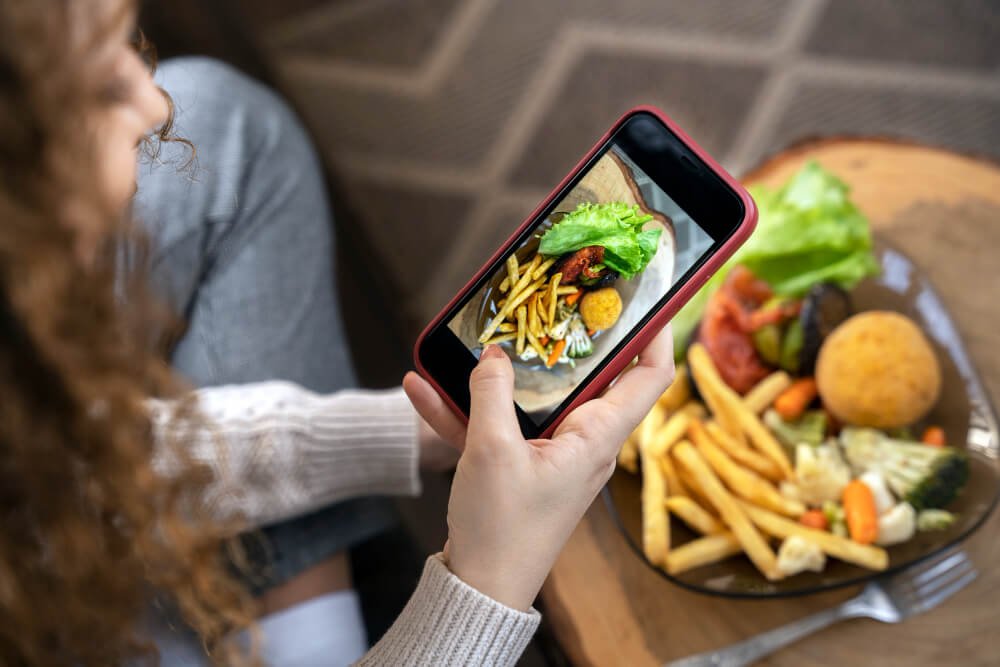
Top 5 Disadvantages of Using AI in the Food Industry
While AI offers numerous advantages for the food industry, it’s important to be aware of the potential challenges.
Acknowledging these disadvantages of AI in the food industry can help us proactively address them and harness the full potential of artificial intelligence. Here are the top 5 disadvantages:
- Job Displacement: As AI automates various tasks across the food value chain, it may lead to job losses in certain roles, particularly those involving repetitive or manual labor.
- Data Privacy and Security Risks: AI systems rely on vast amounts of data, including sensitive information about consumers, suppliers, and operations.
- Bias and Fairness Concerns: AI algorithms can inadvertently perpetuate or amplify existing biases in the data they are trained on, leading to unfair or discriminatory outcomes.
- High Initial Costs: Implementing AI systems can be expensive. The costs of purchasing, installing, and maintaining AI technologies can be prohibitive for smaller food businesses.
- Lack of Human Touch and Creativity: While AI excels at data analysis and automation, it often lacks the human touch and creativity that are important in culinary arts.
While these challenges are real, they shouldn’t deter us from embracing AI. With careful planning and responsible implementation, we can overcome these obstacles and unlock the full potential of AI to transform the food industry for the better.
For instance, AI chatbots can help address some of these concerns by providing accessible customer support and gathering feedback, but it’s important to remain mindful of the potential pitfalls.
How Can AI Solve Food Waste?
AI can play a crucial role in solving the global food waste crisis by enabling more accurate demand forecasting, optimizing supply chain operations, and enhancing shelf-life prediction.
According to the World Economic Forum, we produce an average of 74 kg (163 lbs.) of food waste per year per person. This staggering amount of waste not only contributes to environmental degradation but also represents a significant economic loss.
Artificial intelligence can optimize the entire food supply chain so that we produce and distribute only what’s needed. It can also monitor food quality in real-time, alerting us to spoilage before it happens.
AI can even help us create personalized meal plans that reduce waste at the consumer level. In essence, AI offers a comprehensive food waste solution.
But it’s not just about the technology. AI can also help us raise awareness and change behavior. By building personal brands with AI, we can create compelling campaigns that educate consumers about the impact of food waste and inspire them to take action.
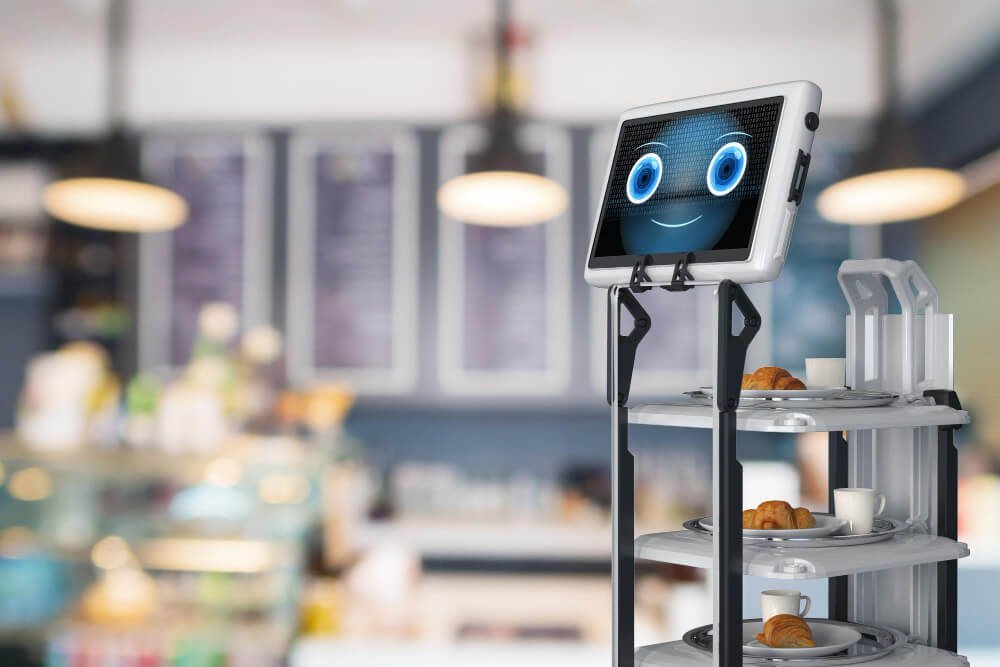
Final Note
AI in the food industry is not just a trend; it’s a transformative force that’s here to stay. The possibilities are vast and exciting, from revolutionizing farming practices to ensuring food safety.
According to a report published in Food Navigator, over 30,000 products are launched each year in the consumer market, out of which 80% do not succeed. By leveraging AI technologies, food businesses can increase their chances of success as well.
AI’s impact is truly profound. Just as AI in the travel sector optimizes itineraries and improves customer service, and AI-powered real estate business enhances property management and sales, AI is transforming the food industry the same way.
By embracing AI, you can unlock a future where the food industry is more efficient, innovative, and responsive to the needs of both consumers and the planet.
People Also Ask
How can AI be used for food?
AI-powered machines that use computer vision can sort food products quickly and accurately based on various criteria like size, color, and weight. This technology improves efficiency, reduces waste, and ensures consistent quality control in food processing.
How is AI used in the fast-food industry?
AI is transforming the fast-food industry with automated order systems, such as AI-powered kiosks and voice orders, as seen in McDonald’s. Additionally, some chains like KFC and Taco Bell are also experimenting with AI drive-thrus that offer personalized recommendations to customers.
How is McDonald’s using AI?
McDonald’s has partnered with Google to leverage generative AI. This collaboration aims to drive innovation in equipment, identify emerging trends, streamline supply chain processes, and simplify tasks for restaurant staff.
How is KFC using AI?
KFC is using an AI system called “Riley” to monitor employee-customer interactions. By analyzing these interactions, the AI can identify successful sales techniques and reward employees accordingly, thus incentivizing better customer service and increased sales.

Sourav Das, a serial entrepreneur and self-proclaimed animal whisperer, has been juggling his love for content, SEO, and his ever-growing menagerie since 2012. Armed with a Masters in Aeronautical Engineering and an arsenal of 14+ certifications from tech giants like Google and Facebook, Sourav has been soaring high in the world of content strategy for over a decade.
When he’s not busy helping companies navigate the complex world of AI, NLP, and machine learning, you can find him tending to his 11 cats, 4 dogs, 60 pigeons, and a lone lizard who keeps wondering how it ended up in this chaos.
With a passion for research and a knack for business strategy, Sourav is on a mission to make the Earth a better place, one valuable article at a time.